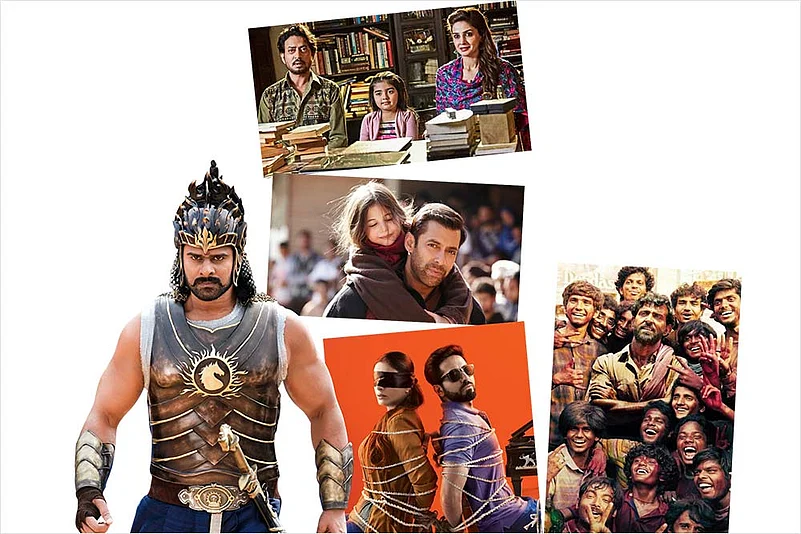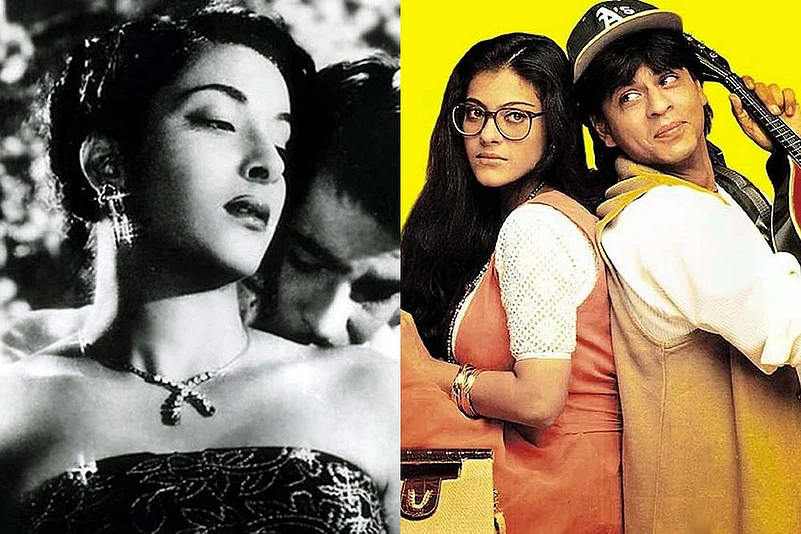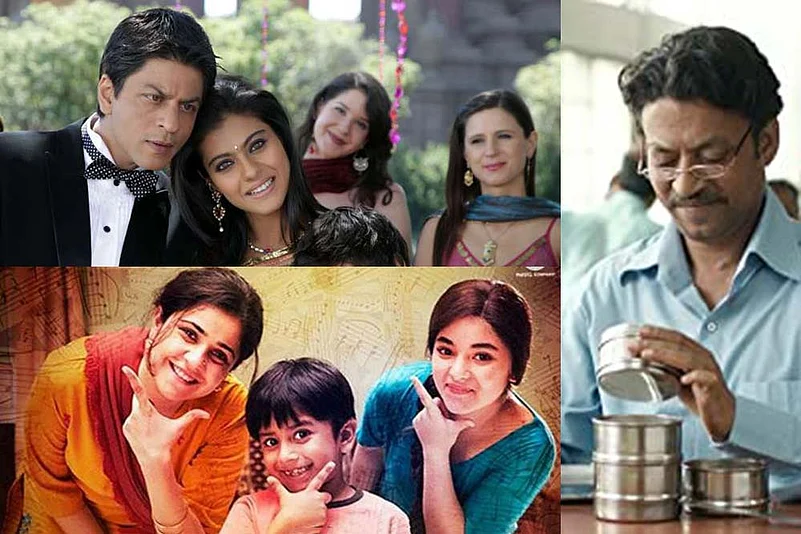Hrithik Roshan, often eulogised as the Greek God of Hindi cinema, should have been in People’s Republic of China by now. The 46-year-old behind last year’s biggest hit, War, was all set to fly there late last month to promote Super 30, the 2019 biopic of mathematician Anand Kumar, ahead of its release in April. But the great disruption triggered by coronavirus has put paid to all his hopes. His Chinese fans will now have to wait indefinitely for their long-awaited date with Da Shuai (‘extremely handsome’ in Mandarin), their nickname for one of their favourite stars from India.
As COVID-19 continues to wreak havoc across the globe, nobody knows when Super 30 will finally hit the screens in China. Wuhan, where the virus first surfaced last year, has recently come out of a 76-day lockdown, but the situation appears to be far from normal. Under the present circumstances, it is difficult to even hazard a guess as to how long will it take for the Chinese movie market to bounce back.
Does the uncertainty signal the end of the road for Bollywood in a territory that trade analysts hail as the proverbial gold mine for Indian actors and filmmakers? Hrithik, for one, has a lot at stake in Super 30’s release across mainland China. His performance in the movie, where he plays the character of a poor teacher who dedicates his life to groom underprivileged students for admission into the coveted Indian Institutes of Technology, had earned him critical and commercial success in India last year. But box-office pundits believe that Super 30 is destined for greater glory in China, thanks to the universal appeal of its plot and the underlying message of education for all. Many think it has the potential to turn into a big money-spinner in China as it may touch a chord with Mandarin audiences the way Aamir Khan-starrer Dangal (2016) did earlier.

A good story is more important than star power in international markets.
“The movie was scheduled to release in China this month (April),” Super 30’s founder Anand Kumar tells Outlook. “Hrithik and I were supposed to leave for China to promote the film towards March-end, but everything has been stalled because of coronavirus.” The 47-year-old mathematician admits that given the global situation, nobody is thinking of Super 30’s release in China at the moment. “This pandemic has affected every individual and industry, and also put human lives in jeopardy. The need of the hour is to stay home and safe,” he says. Anand, however, hopes that the tide will turn for the better in the months ahead. “Life is gradually limping back to normal in China, but it might take at least five to six months for its entertainment industry to spring back on its feet,” he adds.
The pandemic has, doubtless, come as a big blow not only to the Hrithik-starrer but also to Bollywood, which was already reeling from the failure of several big-budget movies when COVID-19 struck. How big a market China has been for Indian cinema, especially in the past four-five years, can be gauged from the fact that Dangal alone did business of a staggering Rs 1,357 crore in the country in 2017. It was followed by another Aamir Khan-starrer, Secret Superstar, which grossed over Rs 800 crore—nine times the amount it did in India.
These successes are remarkable since China is not part of the traditional overseas territories as it allows only a handful of Indian films to be released due to its stringent censorship norms. In fact, it is the US with 30 per cent share, the UK (20 per cent) and the West Asia (25 per cent) that account for three-fourths of the total business abroad. Australia, the rest of Europe and Southeast Asia are the other key markets where the large Indian diaspora waits for the release of Indian films every week.
According to a recent report by FICCI and Ernst & Young, Indian domestic film revenues in 2019 crossed Rs 115 billion, with gross box-office collections for Hindi films at Rs 49.5 billion—the highest ever for Hindi theatricals. In this period, the report states, overseas theatrical revenues fell 10 per cent to Rs 27 billion despite more films being released abroad.

While USSR was earlier the biggest overseas market, now US, UK and West Asia dominate.
The slump was primarily attributed to the failure of some big films starring superstars in the lead last year, but it hardly indicated any perceptible drop in overseas audiences’ interest in Indian cinema. Far from it, an earlier report by the same agencies had stated that India’s film segment was poised to grow at a compounded annual growth rate of 11.6 per cent by 2021. The sector was worth $23.9 billion in 2018, growing 13.4 per cent from 2017. Through these years, theatrical revenues from overseas territories contributed handsomely towards its growth.
However, with coronavirus casting a huge shadow on territories abroad, all estimates might now go for a toss. With all theatres keeping shutters down, both domestic and international business prospects of Indian cinema look quite bleak this year.
Atul Mohan, editor of movie trade journal Complete Cinema, says that the situation may not look up before August-September this year. “As of now, there is a fear factor, which will keep a majority of the audiences out of theatres in the initial weeks once the lockdown is lifted. Theatres will reopen with reruns of already released movies in order to gauge the mood of the public. The big movies will certainly remain on hold for a few months more.”
“It will cause a huge loss to filmmakers everywhere, especially those of Bollywood movies, which seek a return of 30 to 50 per cent of their total business from overseas territories these days,” he adds. “It was primarily Shah Rukh Khan’s popularity in the overseas market that made him the king of Bollywood and also prompted filmmakers realise its true potential.”
It’s not as though the industry suddenly discovered overseas territories to be its elusive El Dorado in the new millennium. Way back in 1949, K.A. Abbas’s Dharti Ke Lal (1946) was released in the USSR. Three years later, Mehboob Khan’s Dilip Kumar-starrer Aan (1952) was dubbed in 17 languages before being released in as many as 28 countries. Raj Kapoor’s iconic Awara (1951) became a cult hit in countries like USSR and China after its release in 1954 and went on to be the first Indian film to sell 100 million tickets abroad. Barring a Caravan (1971) here or a Bobby (1973) there, the number of Hindi films releasing abroad reduced considerably in the next couple of decades. In 1982, however, Mithun Chakravorty’s Disco Dancer gained a cult following in the USSR and China. However, the collapse of the Soviet Union in 1991 led to the end of what was the biggest international market of Bollywood until then.

Interestingly, the disintegration of the Russian market paved the way for a big jump in Bollywood’s overseas collections in countries like the US and UK, mainland Europe and even in West Asia during the post-liberalisation period. With a large South Asian workforce, especially Indians in the IT sector moving abroad around the turn of the new millennium, overseas markets suddenly turned extremely lucrative for not only Bollwyood, but also for Tamil, Telugu and Punjabi film industries.
In fact, such was the lure of foreign territories that films revolving around NRI protagonists primarily catering to the Indian diaspora began to be made in large numbers. Shah Rukh Khan’s Dilwale Dulhania Le Jayenge (1995) wooed NRI audiences settled in Western countries like no earlier film did, while his Dil Se (1998) became the first movie to make it to the top ten list of the UK box office. Later, Shah Rukh’s My Name is Khan (2010) earned the distinction of being the first Indian production to gross Rs 1 billion in the overseas market. No wonder, distributors began to hail him as the god of overseas markets.
Like Shah Rukh, two other Khans, Aamir and Salman, began to enjoy phenomenal international popularity during this period. The success of Dangal and Secret Superstar made Aamir a darling of the Chinese audience, while Salman enjoyed a massive fan-following in West Asian countries. His Bajrangi Bhaijaan (2015) had a great run in China as well. But these stars never had a monopoly in the foreign market. If a movie, howsoever small, was good, star power did not matter. It was proven once and for all by the extraordinary success of the Irrfan Khan-starrer The Lunchbox in 2013.
Interestingly, while Bollywood was doing great business in the US and elsewhere, Hindi filmmakers had the least idea about the emerging Chinese market in the new millennium. The renewed interest of Chinese viewers in Bollywood movies actually began about a decade ago, when pirated prints of 3 Idiots (2009) made their way to the Chinese market and captured the imagination of local audiences. It subsequently led to the official release of the Aamir Khan-starrer, but it was his next, PK (2014), which did business of more than Rs 100 crore there and made Bollywood sit up and take note of China’s huge potential. By the time Dangal and Secret Superstar were released, Aamir had become such a huge star that both his films smashed records, doing better business than many big-budget Hollywood ventures that were released around the same time. In recent years, movies with relatively small budgets, such as Irrfan Khan’s Hindi Medium (2017), Rani Mukerji’s Hichki (2018) and Ayushmann Khurrana’s Andhadhun (2018), did good business.

In recent years, movies with relatively small budgets, such as The Lunchbox and Secret Superstar have done good business.
All eyes are now on big upcoming movies such as Akshay Kumar’s Sooryavanshi or Ranveer Singh’s 83, which were all set to be released, but had to be deferred due to the lockdown. Film critic Murtaza Ali Khan says that movie business is among the worst-hit in the world today. “Social distancing guidelines have resulted in shutting of cinema halls and multiplexes, and shooting schedules have also been indefinitely postponed,” he says. “Many new releases have been pushed back by several months, but Bollywood is likely to suffer worse in the international arena.”
Murtaza points out that Europe, China, West Asia, US and Australia have traditionally been profitable markets for Bollywood, but with the devastating effect COVID-19 is expected to have on the global economy in the long run, it seems unlikely that normalcy will return anytime soon. “Depending on how quickly the pandemic is checked globally, it might take anywhere between six months to a couple of years for Bollywood to regain its lost overseas territories,” he says.
Movie trade analyst Girish Johar concurs. He says that it is a massive blow for Bollywood in terms of overall losses. “Fear and entertainment do not go hand in hand,” explains Johar. “When people are afraid of coronavirus, how can they think of going to a theatre? Films will be the last thing on their mind.”
Let alone Bollywood, says Johar, even big Hollywood studios such as Sony, Paramount and Marvel have been forced to defer the release of their upcoming extravaganzas by a few months or a year. “They might all get released at around the same time when the situation improves, but it will only aggravate the problems of Indian filmmakers because it will put their movies in direct clash with Hollywood in overseas territories,” he says.
According to Johar, producers of big-budget movies ready for release are the worst hit in Bollywood. “If they choose to release their films soon after the lockdown, they will have to forego revenues from overseas territories because the situation will not return to normal immediately,” he says. “And if they wait for months for the situation to improve, they will have to incur more financial losses because of the steep interest rates they will have to pay against their borrowings. It is a double-edged sword for them.”
***
Top Ten Indian Grossers In Overseas Territories*
- Dangal 2016 $228 million
- Secret Superstar 2017 $140 million
- Bajrangi Bhaijaan 2015 $80.4 million
- Disco Dancer 1982 $75.85 million
- Baahubali 2 2017 $58.51 millio
- PK 2014 $53.4 million
- Andhadhun 2018 $48.78 million
- Hindi Medium 2017 $36.52 million
- Dhoom 3 2013 $35.6 million
- 3 Idiots 2009 $30.5 million
*Source: Trade magazines
By Giridhar Jha in Mumbai
















